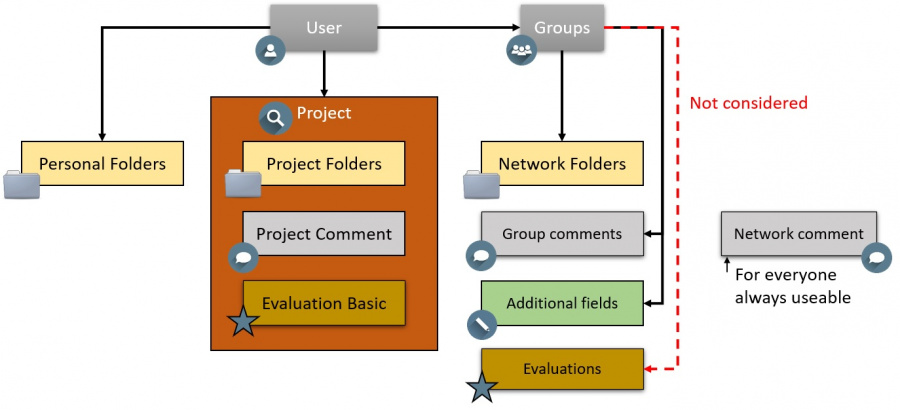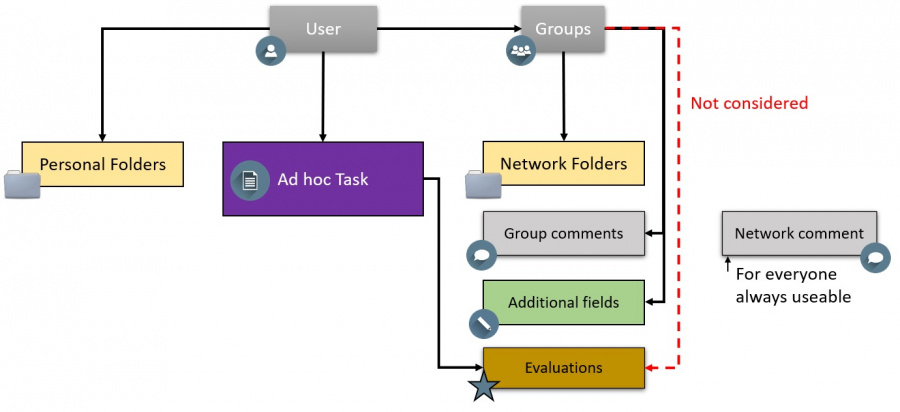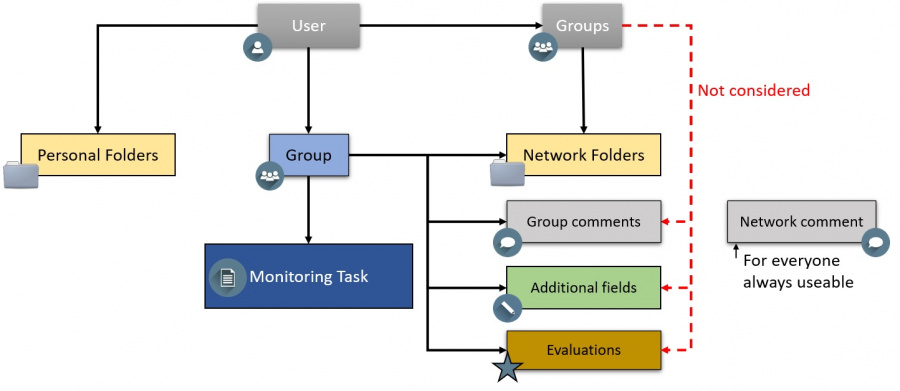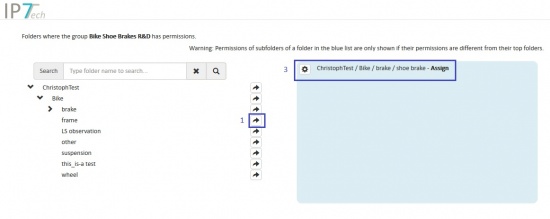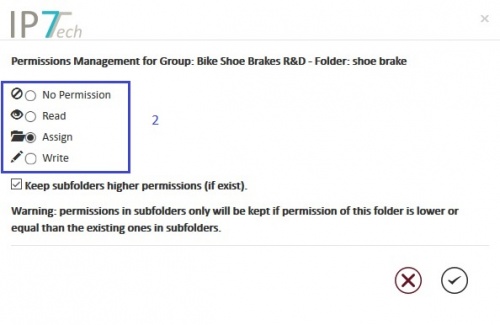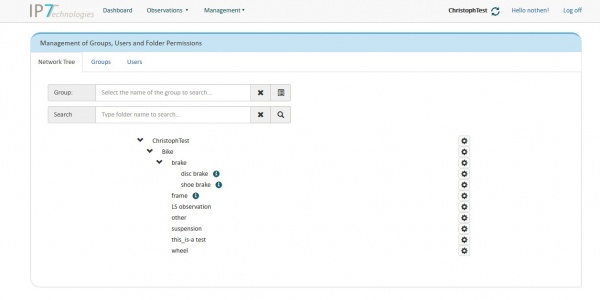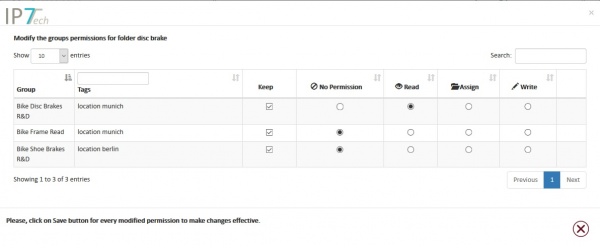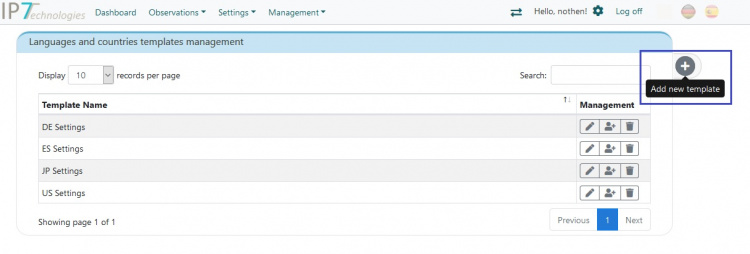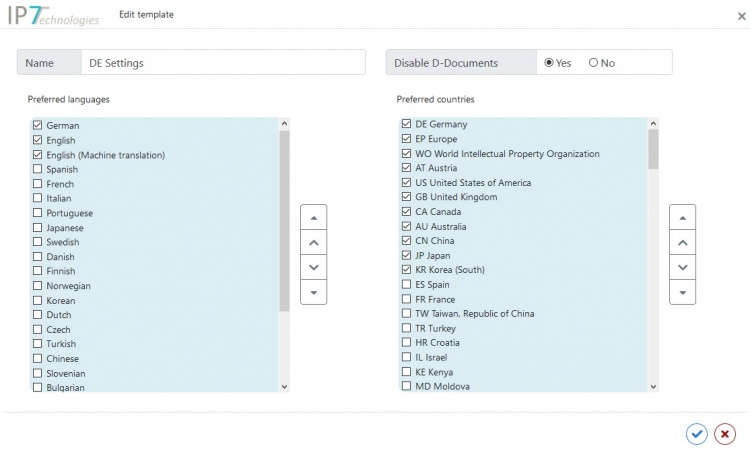EN:network administration: Difference between revisions
| Line 81: | Line 81: | ||
A group, for example, has the permission to access a specific folder thus all users assigned to this group possess this permission.<br/> | A group, for example, has the permission to access a specific folder thus all users assigned to this group possess this permission.<br/> | ||
In the menu item "Management" - | In the menu item "Management" - "Groups", the groups can be managed.<br/> | ||
After clicking the folder button, the folder permissions for the selected group can be set/changed.<br/> | After clicking the folder button, the folder permissions for the selected group can be set/changed.<br/> | ||
| Line 93: | Line 89: | ||
[[File:NetworkAdminGroupFolderPms.jpg|500px]] | [[File:NetworkAdminGroupFolderPms.jpg|500px]] | ||
1 – Select folder | 1 – Select folder<br/> | ||
2 – Select permissions | 2 – Select permissions<br/> | ||
3 – Permission is displayed in the list | 3 – Permission is displayed in the list<br/> | ||
=== Folder permissions === | === Folder permissions === | ||
Revision as of 13:55, 3 November 2021
This article is only of interest to users which own an account with Administrator rights.
In a network respective permissions need to be set for users.
These permissions can only be assigned by a user with administrator rights in the web application (https://web.ip7.tech).
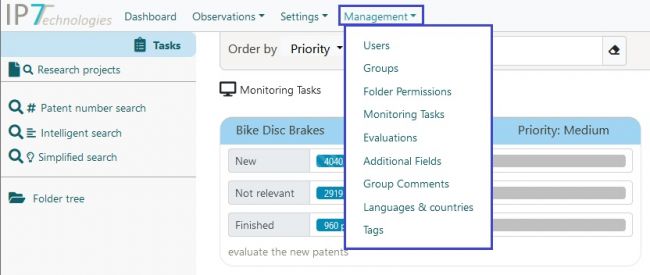
Overview
With this overview is to be obtained when a user has access to certain features.
In addition, it should be apparent which options can be mapped in the administration and which points are fixed.
The entrance of the user into the Compass is thereby crucial.
Here there are up to 3 possibilities:
Regardless of how a user enters Compass, the following permissions always apply:
- The user has access to his "Personal Folders".
- The user has access to network folders according to the assigned groups.
- The user has access to network comments.
Entry Project
When a project is opened, the user has access to the 3 project specific items:
- Project folder
- Project comment
- Project evaluation (Basic evaluation)
These points are directly attached to the project and depending on which project is opened, certain values (e.g. project comments) are displayed or not.
In addition, these points are fixed predefined and can not be changed.
For example: the project evaluation is called "Basic" in every project and always consists of 4 stars.
The user also has access to the following items, which can be assigned through permissions via groups by the admin users:
- Network folder
- Group_comments
- Additional fields
Entry Ad Hoc Task
When an Ad Hoc Task is opened, the user has access to the following items, which can be assigned by permissions through groups by the admin users:
- Network folder
- Group_comments
- Additional fields
It is possible to link evaluation(s) directly to an ad hoc task.
The user has access to this evaluation(s) accordingly.
Entry Monitoring Task
Each monitoring task is associated with a group.
This group is responsible for the permissions within the monitoring task.
Only the permissions set for this group are considered for the following:
If the user has any other permissions on any of the above through other groups, they are not taken into account.
For example: a user has permissions on an additional field via a group.
However, the group associated with the monitoring task does not have permissions on this additional field.
Therefore, the user will not see this additional field when he or she enters with the monitoring task.
The exception to this is the network folders.
Regardless of which group, permissions on network folders count.
User administration

The users are managed in the menu under "Management" - "Users".
Within the user management, users can be created, edited or deleted.
In addition, a list of all existing users can be exported to Excel.
Groups

Assigning the rights is always carried out via groups and can’t be performed for individual users.
A group, for example, has the permission to access a specific folder thus all users assigned to this group possess this permission.
In the menu item "Management" - "Groups", the groups can be managed.
After clicking the folder button, the folder permissions for the selected group can be set/changed.
1 – Select folder
2 – Select permissions
3 – Permission is displayed in the list
Folder permissions
Permissions can be set for all folders in a network.
In the menu item "Management" - "Folder permissions" the folder permissions can be managed:
Here, the respective permissions can be assigned to groups for a selected folder.
By clicking the gear icon on the right of a folder, the window for assigning the permission will open:
Monitoring Task

Monitoring tasks can be created and edited.
Here it is also possible to assign permissions for the desired groups.
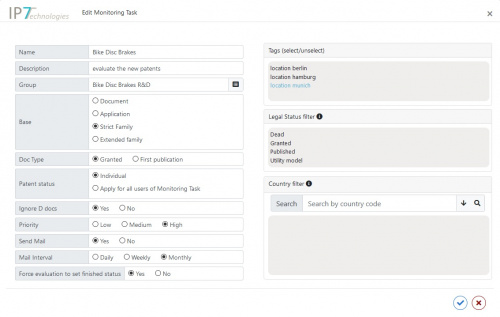
When creating monitoring tasks, the following settings can be chosen:
- Name
- Description
- Group
All users assigned to this group are selected for the monitoring task.
Also, specific permissions can be selected for the individual group.
This relates to evaluation criteria, additional fields and group comments.
When the monitoring task is subsequently opened by users, only the selected fields are visible/useable.
- DocType
If the monitoring task contains multiple documents for one application and the setting is “A-Application” it is possible to select whether the application or the grant is displayed.
- SearchType
Here the basis of the results is displayed.
- Patent Status
"Individual" – every user can assign a patent status.
"Apply for all users of Monitoring Task" – all users share the status.
If the status “OK” is set for a patent, all other users will see this status.
- Ignore D docs
This way, documents like GB D0 are ignored and not displayed as new results.
- Mail inform
All users assigned to this monitoring task are informed by E-Mail about new patents.
- Mail interval
The interval used to send these E-Mails.
- Force evaluation to set finished status
Once this option is enabled, users must create an evaluation in order to set a patent to "done".
If an attempt is made to set a patent to "done" without an evaluation, an error message will be displayed.
Evaluations

It is possible to set up/edit specific evaluation criteria for evaluations.
Here, the respective permissions can be assigned to the desired groups.
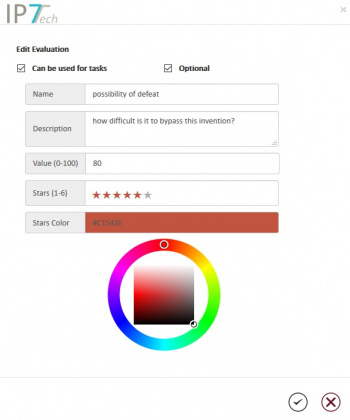
When creating evaluation criteria, the following settings can be assigned:
- Can be used for tasks
Make evaluation criteria useable for Ad-hoc tasks.
- Name
Users can see this name when assigning evaluations.
- Description
Users can read this description when assigning evaluations.
Here a description can be given on what the users should evaluate.
Example: Please evaluate the simplicity of this specific patent being circumvented.
- Value
Please refer to the chapter “Average value when using multiple evaluations“ on the page evaluation to see how the effects of the assigned value.
- Stars
Here you can select, how many stars are available for the users when assigning evaluations.
You can choose between 1-6 stars.
- Stars Color
The color of the stars can also be selected.
In case multiple criteria are used to create an evaluation, it might be helpful to use different colors.
additional fields

Using "additional fields” you can define your own fields which can subsequently be filled by users.
This way it is possible, for example, to create additional fields with internal classifications or internal reference numbers.
The respective permissions can then be assigned to the desired groups.
Once an additional field is created, to options are available:
- Text
- Number
For this type of field the maximum area can be defined.
This way a field, e.g. “RFN” (reference number) can be created using the field type “Text”, which allows a maximum of 12 characters.
Group comments
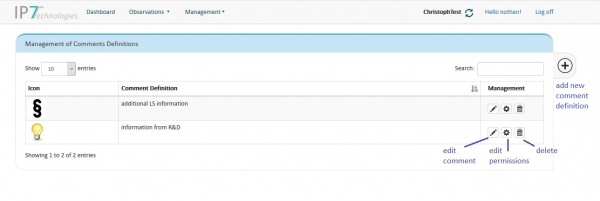
In a network it is possible to assign comments under specific aspects.
“Group comments” can be created.
For these comments, specific permissions can be assigned to desired groups.
It is also possible to add individual icons to the “Group comments”.
Languages and countries
Certain settings can be defined for users.
This is useful for example after new users have been created.
This way, new users do not have to define their own settings.
First, a template must be created with the desired settings:
The preferred languages and countries can be set up:
Finally, the template can be applied to the selected users:
Afterwards the users can still adjust their settings themselves.
Several templates with different settings can be created, e.g. for users from different countries or with different language skills.
Tags
Users, groups and monitoring tasks can be tagged.
This way it is possible to, for example, set up groups for specific sites.


